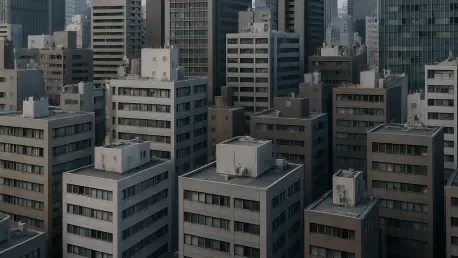In the heart of Tokyo, a remarkable shift is unfolding within the commercial real estate landscape, where the Grade B office market has emerged as a powerhouse of growth in the third quarter of this year. Across the central five wards—Chiyoda, Chuo, Minato, Shinjuku, and Shibuya—rental rates for large-scale Grade B offices have surged, outpacing their Grade A counterparts and reflecting robust demand amid constrained supply. This unexpected momentum highlights a broader trend: as premium office spaces become scarce, businesses are turning to Grade B properties as a compelling alternative. The result is a dynamic market characterized by significant rental increases and tight vacancy levels, painting a picture of resilience and opportunity in one of the world’s most competitive real estate arenas. This development not only underscores the adaptability of tenants but also signals a pivotal moment for landlords capitalizing on this surge in interest.
Rental Surge Across Central Wards
A striking feature of the current market is the impressive rental growth in Tokyo’s Grade B office sector, with average rents for large-scale properties climbing by 4.6% quarter-on-quarter and a substantial 11.1% year-on-year, reaching JPY 27,957 per tsubo. Among the central five wards, Chiyoda has taken the lead with a remarkable quarterly increase of 6.8% and an annual jump of 12.7%, driven by heightened demand from businesses seeking quality space. Other areas, such as Chuo, Minato, and Shinjuku, have also seen consistent gains, benefiting from a lack of new Grade A office stock that has redirected tenant focus to Grade B options. Even Shibuya, with the smallest quarterly rise at 1.7%, recorded a notable yearly growth of 10.1%. This widespread escalation in rental rates across all wards demonstrates a unified strength in demand, despite variations in the pace of growth, and reflects a market adapting to evolving business needs amid limited high-end supply.
Tight Vacancies and Future Pressures
Examining vacancy trends reveals another layer of the market’s vigor, as the average vacancy rate for large-scale Grade B offices in Tokyo’s central wards remained exceptionally low at 1.5% in the third quarter, despite a marginal quarterly uptick of 0.1 percentage points. This rate represents a significant year-on-year drop of 1.4 percentage points, signaling a constrained supply environment that continues to favor landlords. While Chiyoda and Shinjuku experienced slight declines in vacancy rates, indicating persistent tenant interest, wards like Shibuya, Minato, and Chuo saw minor increases that did little to ease the overall tightness. Rising construction costs are expected to further limit new office supply in the coming years, intensifying the imbalance between availability and demand. This scenario not only sustained rental growth throughout the quarter but also highlighted the market’s depth, as landlords successfully leveraged strong interest to push rents higher, reflecting confidence in the sector’s enduring appeal.









